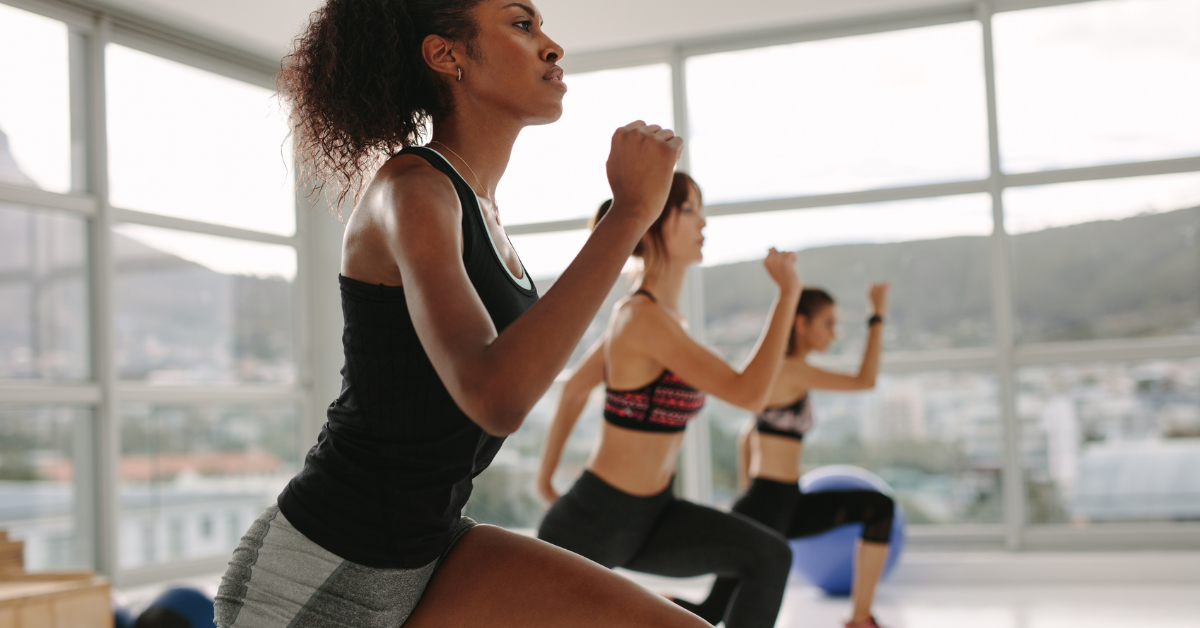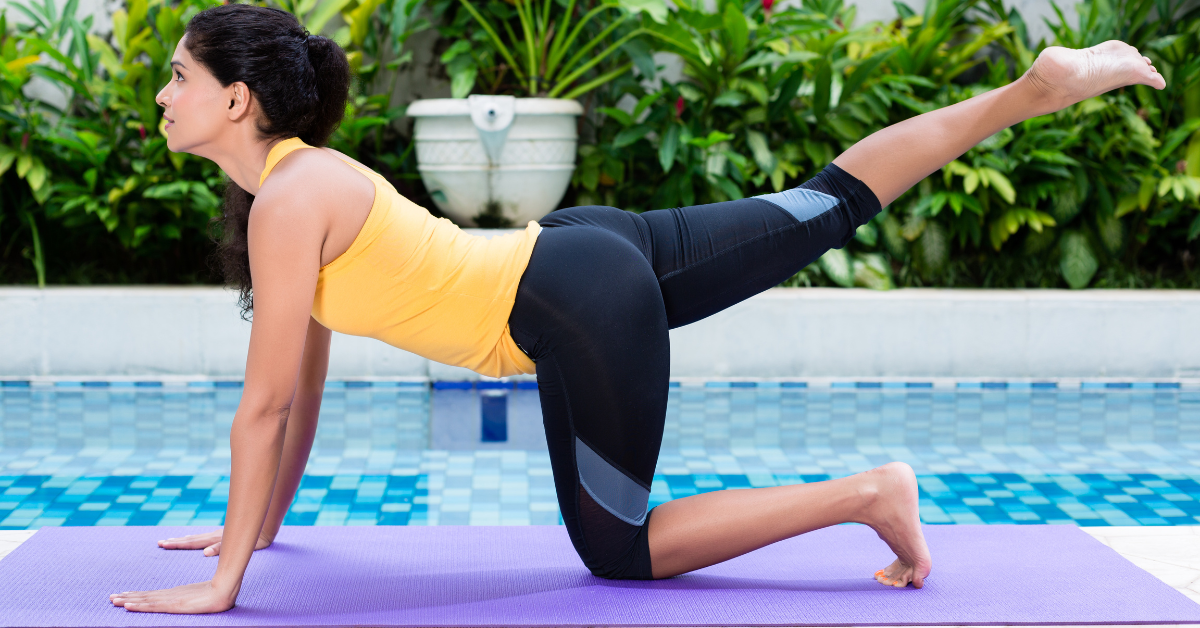Working Out On Your Period: Debunking the Myths and Facts
As a Personal Trainer, I often get asked about the merits and drawbacks of exercising during your period. In this article, we’ll dive deep into a topic that is often shrouded in mystery and misinformation – working out on your period.
While research on this topic is ongoing, there are a few key points to consider. First, it’s important to recognise that every woman’s experience with her menstrual cycle is unique. Some women may experience significant changes in energy levels, strength, or mood during certain phases of the cycle, while others may not notice any substantial fluctuations.
However, it’s also essential to remember that a woman’s menstrual cycle is just one of many factors that can influence her training. Other factors, such as nutrition, stress, sleep, and overall health, also play crucial roles in fitness outcomes.
Therefore, while menstrual cycle tracking can be a useful tool, it should be used in conjunction with a holistic approach to health and fitness. Our Personal Trainers can help you develop a comprehensive fitness plan that takes into account your individual cycle and overall well-being.
This comprehensive guide aims to shed light on the crucial intersection of fitness and menstruation, providing actionable insights and practical advice to help you navigate your workout routine during “that time of the month”.
In this post, we will be exploring key areas such as:
-A quick walk through the menstrual cycle
-Is it a good idea to workout on your period?
-The pros and cons of working out on your period
-Practical tips for working out on your period
-Which exercises should be avoided during periods?
-Does working out on your period burn more calories?
-Should you adjust your training programme based on your menstrual cycle?
DOWNLOAD YOUR FEMALE EXERCISE PLAN
Unveiling the Phases of the Menstrual Cycle
Before diving into the pros and cons of working out during your period, it’s crucial to understand why discomfort occurs in the first place. Menstruation is a natural biological process where the body sheds the lining of the uterus. This shedding is often accompanied by hormonal fluctuations that can lead to physical and emotional discomfort.
The menstrual cycle, which averages 28 days in length (though it can range between 21 and 35 days and does not always operate with precision), consists of four phases – menstruation, follicular, ovulation, and luteal phase. Each phase brings unique physiological changes triggered by rising and falling hormone levels, that can affect performance, recovery, mood, appearance,mood swings and cravings.
Menstruation Phase: This is the first phase of the menstrual cycle, typically lasting between 3 to 7 days. It begins on the first day of menstrual bleeding and is often associated with symptoms such as cramps, fatigue, and mood swings, which may impact a woman’s energy levels and exercise performance. But don’t worry, your hormones actually are favourable for performance in this phase.
Follicular Phase: The follicular phase overlaps with menstruation and continues until ovulation. During this phase, levels of estrogen and progesterone are relatively low but gradually increase as the body prepares for ovulation. Some research suggests women may experience increased strength and endurance during this phase, potentially making it an optimal time for high-intensity workouts.
It makes sense if you think about it. Your body goes into a more relaxed mode, when you are in the clear of the possibility of getting pregnant. As ironic as it might sound, your exercise physiology is most like a man’s during your period and the days that follow. And the good news is you are stronger, likely to feel less pain and recover faster while strength training during this phase.
Ovulation Phase: Ovulation occurs roughly in the middle of the menstrual cycle, around day 14-15 in a 28-day cycle. This is when an egg is released from you fallopian tubes. Estrogen peaks just before ovulation, which might enhance mood and energy levels. However, some women experience pain or discomfort during ovulation, which could affect exercise performance.Then estrogen levels dip at this point but will soon rise again as the body goes into nesting mode, in case that egg is fertilised.
Luteal Phase: The final phase of the menstrual cycle is the luteal phase, which lasts until menstruation begins in the next cycle. Progesterone levels peak, surpassing estrogen, to prepare the lining of the uterus for egg implantation. Both estrogen and progesterone reach peak levels about 5 days before menstruation. This is where premenstrual syndrome (PMS) symptoms can rear up, which can cause symptoms like bloating, cravings, and mood swings. These symptoms might impact comfort and motivation to exercise.
It’s important to note that every woman’s menstrual cycle is unique, and individual responses to hormonal fluctuations can vary. Therefore, understanding and tracking one’s menstrual cycle can be a useful tool in optimising training and recovery strategies. Always consult with a healthcare or fitness professional for personalised advice.
Is it a Good Idea to Workout on your Period?
The short answer is yes, it is a good idea to workout on your period! It’s a common myth that women should avoid physical activity during their period, but this is far from the truth. Exercise can actually help alleviate some of the common symptoms associated with menstruation, such as bloating, fatigue and mood swings.
This is because exercise releases endorphins, the body’s natural painkillers, which can help relieve cramps and improve your mood. Additionally, engaging in regular physical activity can help regulate your menstrual cycle and reduce symptoms of premenstrual syndrome (PMS).
However, it’s important to listen to your body. If you’re feeling particularly fatigued or experiencing severe cramps, it might be best to take it easy with lighter activities like yoga or walking.
The Pros and Cons Working Out On Your Period
Despite the discomfort, there are several benefits to working out on your period:
- Improved Mood: Physical activity releases endorphins, the body’s natural painkillers. These chemicals enhance your mood and can alleviate the emotional symptoms associated with menstruation.
- Reduced Cramps: Exercise improves blood circulation, which can help ease menstrual cramps. Activities like yoga and light cardio are particularly beneficial. Additionally, Sports Massage can help to alleviate further muscle cramps and tension associated with menstruation.
- Less Bloating: Regular workouts can help reduce water retention and bloating, common complaints during menstruation.
While there are numerous benefits, it’s also important to note potential drawbacks:
- Risk of Overexertion: During menstruation, hormonal fluctuations can cause fatigue, making it harder to maintain your regular workout intensity. Pushing too hard could lead to overexertion or injury.
- Increased Discomfort: Some women might find that certain exercises, especially those involving intense abdominal engagement, exacerbate menstrual cramps.
Practical Tips for Working Out On Your Period
Considering the pros and cons, here are some tips for how to stay safe and effective when working out on your period:
Listen to Your Body: This is the golden rule. If you’re feeling low on energy, consider lighter weights or easier activities like walking or restorative yoga.
Avoid High-Intensity Workouts: High-intensity workouts can stress your body. Opt for moderate-intensity exercises using your heart rate.
Stay Hydrated: Hydration is crucial during menstruation to prevent bloating and maintain energy levels.
In conclusion, while exercising during menstruation has its benefits, it’s essential to approach it with caution and respect for your body’s signals. Always consult a healthcare professional before making significant changes to your exercise routine, particularly during menstruation.
Which exercises should be avoided during periods?
As I said above it’s important to, “listen to your body,” and it especially rings true when it comes to working out on your period. With hormonal fluctuations and physical discomfort, it’s important to adjust our fitness routines to accommodate our bodies’ needs.
Exercise can indeed be a helpful tool in managing menstrual symptoms, from reducing painful cramps to boosting mood. However, it’s not about avoiding certain exercises entirely but rather adjusting the intensity.
For women experiencing significant pain or physical limitations during their menstrual cycle, consulting with a Physiotherapist can provide strategies for pain management and gentle exercises to maintain mobility.
High-Intensity Exercises
High-intensity workouts, such as HIIT or heavy weightlifting, can put a lot of stress on the body. While these workouts are effective for building strength and endurance, they may not be the best choice during the luteal phase (like PMS time) going into the follicular phase. The reason is that during that high-hormone phase, our plasma volume drops making our blood thicker and more difficult to pump out with every heartbeat, and all this makes exercise feel harder.
Alternatives: Instead of high-intensity workouts, consider lower-intensity activities such as light weightlifting, cycling, swimming, or brisk walking. These exercises still provide a good cardiovascular and strength workout without putting too much strain on your body.
Abdominal and Pelvic Pressure Exercises
Exercises that put pressure on the abdomen or pelvic region, like deep squats or crunches, might cause discomfort during menstruation. This is because these movements can increase pelvic congestion, leading to more discomfort.
Alternatives: Opt for exercises that engage the major muscle groups without putting too much pressure on the pelvic region. Planks, step-ups, and seated twists are excellent choices.
Remember that these guidelines aren’t one-size-fits-all. What feels good for one person might not feel the same for another. Therefore, it’s important to listen to your body and adjust your workouts accordingly. If you’re feeling low on energy, it’s okay to take a rest day or opt for a lighter workout.
The key to exercising during menstruation is to find a balance between staying active and respecting your body’s needs. It’s not about avoiding exercise but rather about adjusting the intensity and type of exercise to align with your comfort level. So, go ahead, lace up those trainers and get moving because your period shouldn’t stop you from staying healthy and active.
Does Working Out On Your Period Burn More Calories?
There’s a common belief that exercising while on your period could lead to burning more calories. However, the truth is a little more nuanced.
While the menstrual phase itself doesn’t necessarily increase calorie burn, other phases of the menstrual cycle might. For instance, as shown with this research, you might experience a slight uptick in calorie burn during the post-ovulation luteal phase, when your hormone levels are higher, but the change is negligible. So, if you’re working out with the aim of burning more calories during your period, you might want to reconsider your strategy.
However, it’s important to remember that exercise is beneficial for many other reasons beyond calorie-burning. Regular physical activity can help alleviate menstrual symptoms, improve mood, and promote overall health.
So, whether or not you burn more calories, maintaining an exercise routine throughout your menstrual cycle is a good idea. The key is to listen to your body and adjust your workouts according to how you feel. After all, staying active and healthy should be the primary goal, regardless of the phase of your menstrual cycle.
Should You Adjust Your Training Programme Based on Your Menstrual Cycle?
When it comes to fitness, one question often arises: Do we need to adjust women’s training programs based on their menstrual cycle? A recent study provides some fascinating insights into this very topic.
A recent study titled “The Influence of the Menstrual Cycle on Muscle Strength and Power Performance” provides enlightening insights into this matter. The study aimed to explore how muscle performance fluctuates during different phases of the menstrual cycle.
Key Outcomes of the Study
The study involved thirteen resistance-trained women who were monitored for approximately 30 days. Their muscle performance in the Smith machine half-squat exercise was assessed during three different phases of their menstrual cycle.
The findings revealed that muscle strength and power performance varied across the menstrual cycle. This suggests that hormonal changes occurring throughout the menstrual cycle can influence a woman’s strength training capacity.
Impact on Training Your Program
These findings highlight the importance of tailoring strength training programs in accordance with the menstrual cycle. For instance, if you experience higher strength levels during a specific phase of your cycle, you could schedule your high-intensity workouts during this time.
In conclusion, understanding the relationship between menstrual cycles and strength training can be empowering. It allows women to work in harmony with their bodies, optimising their fitness routines for better health and well-being.
Case Studies: Navigating Fitness and the Menstrual Cycle
To better understand how sex differences and menstrual cycle considerations can impact training outcomes, let’s examine a hypothetical case study involving Sarah, a female client.
Sarah experiences increased fatigue and reduced strength during her luteal phase, which is the final phase of her menstrual cycle. This period typically comes with hormonal fluctuations that can lead to various symptoms, including bloating, mood changes, and, as in Sarah’s case, fatigue and reduced strength.
Recognising these changes, Sarah’s fitness professional adjusted her training program accordingly. During the luteal phase, they focused on reducing the intensity of her workouts, shifting the emphasis towards lighter exercises, flexibility, and recovery strategies. This adjustment was made to accommodate Sarah’s reduced energy levels and strength during this phase.
The result? By tailoring her training program to her menstrual cycle, Sarah was able to maintain a more consistent workout regimen. She also avoided unnecessary setbacks that could have resulted from pushing too hard when her body was not at its peak performance. Ultimately, she achieved more sustainable progress towards her fitness goals.
This case study highlights the potential benefits of adjusting women’s training programs based on their menstrual cycle. However, it’s important to remember that every woman’s experience is unique, and such adjustments should always be personalised. Open communication between fitness professionals and their female clients is key to understanding individual needs and tailoring training programs accordingly.
Consider another conversation between Barbara, an athlete preparing for a competition, and her strength coach. Barbara is concerned about how her menstrual cycle might impact her performance during the competition. This case study shows how understanding the intricate relationship between fitness and the menstrual cycle can help women navigate their training schedules.
Barbara shares her concerns about feeling sluggish due to premenstrual syndrome (PMS). She also realises that her competition coincides with her next period, which further fuels her worry. The fitness enthusiast reassures her by explaining that the impact of the menstrual cycle on performance varies from person to person. They reference a study on endurance rowers, which found that the luteal phase (the week before the period starts) didn’t affect their training. However, they also highlight that the luteal phase can increase body temperature, potentially leading to quicker fatigue in hot or humid conditions.
The fitness enthusiast then recommends Barbara to track her menstrual cycle using an app. This can help her monitor her feelings and workout performance in relation to her cycle. They remind her to focus on the key factors affecting performance: preparation, rest, nutrition, and stress management.
Conclusion and Takeaways
Navigating the complex interplay between menstrual cycles and strength training can seem daunting, but armed with the right information and a willingness to listen to our bodies, we can turn this challenge into an opportunity. By understanding the findings of recent studies, we can tailor our fitness routines to align with our body’s natural rhythms, optimising our performance and promoting overall well-being.
Whether it’s adjusting workout intensity during different phases of the menstrual cycle or ensuring adequate rest during the PMS phase, every step taken is a stride towards better health. The key takeaway here is to stay active, listen to your body, and adapt your workouts to your menstrual cycle rather than fighting against it.
The key takeaways from this discussion are:
Menstrual Cycle Impact: Hormonal fluctuations during the menstrual cycle can influence muscle strength and power performance, which can affect your training regimen.
PMS Considerations: PMS symptoms can impact your ability to maintain your usual workout intensity. Adjusting your activities during this period can help ensure consistent progress while prioritising self-care.
Importance of Exercise: Despite the potential challenges, maintaining regular physical activity throughout the menstrual cycle can help manage menstrual symptoms and boost overall health.
Listening to Your Body: The most effective approach to training is one that respects and responds to your body’s signals. This means adjusting workout intensity based on how you feel at different stages of your cycle.
Remember, every woman’s experience with menstruation is unique. What works for one may not work for another. It’s all about finding what works best for you and your body. Embrace the journey, stay patient, and, most importantly, stay positive. Your path to fitness is a personal one, and every step you take is a testament to your strength and resilience. Here’s to empowering ourselves and living our healthiest lives!




